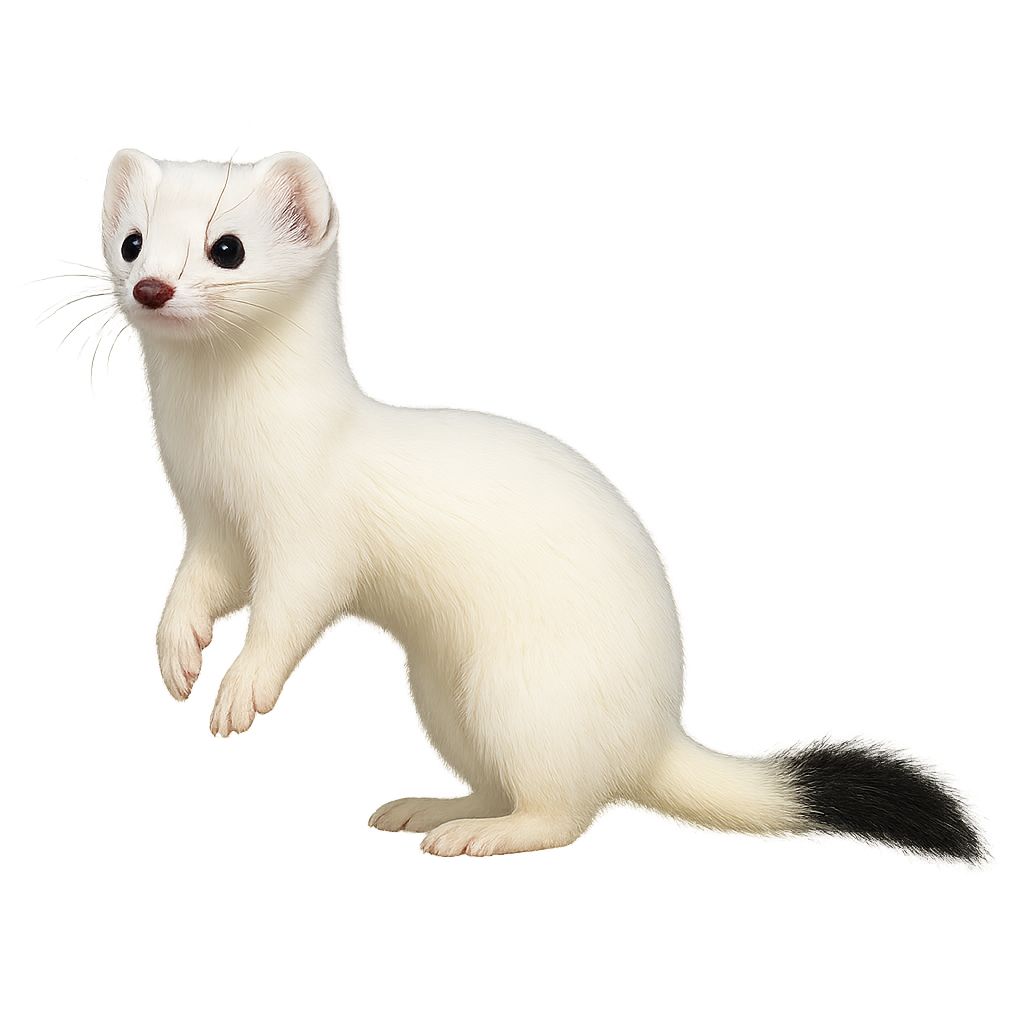Your wildlife photography guide.
Explore the stoat in detail, study its behavior, prepare your shots.
Where to observe and photograph the stoat in the wild
Learn where and when to spot the stoat in the wild, how to identify the species based on distinctive features, and what natural environments it inhabits. The WildlifePhotographer app offers tailored photography tips that reflect the stoat’s behavior, helping you capture better wildlife images. Explore the full species profile for key information including description, habitat, active periods, and approach techniques.
Stoat
Scientific name: Mustela erminea

IUCN Status: Least Concern
Family: MUSTELIDAE
Group: Mammals
Sensitivity to human approach: Suspicious
Minimum approach distance: 10 m
Rut period: April to August
Gestation: 21-28 jours
Births: March to May
Habitat:
Forests and woodlands
Activity period :
Mainly active at night, generally discreet during the day.
Identification and description:
The Ermine is a small carnivorous mammal of the weasel family, easily recognizable by its immaculate white winter coat, which contrasts with its black-tipped tail. It measures about 25 to 35 cm in length, with a tail that can reach up to 10 cm, and weighs between 100 and 350 g. During the summer, its coat is typically brown with a lighter belly, but it turns completely white in winter, except for the black tip of its tail. The Ermine primarily inhabits forests, grasslands, and mountainous areas across Eurasia and North America. It is an excellent hunter, feeding mainly on small mammals such as mice, voles, but also on birds and eggs. The Ermine uses its hunting skills to capture prey with great agility and speed. While it is not endangered, the Ermine can be affected by habitat loss and climate change, particularly affecting the color of its fur.
Recommended lens:
400 mm – adjust based on distance, desired framing (portrait or habitat), and approach conditions.
Photography tips:
Use a telephoto lens to photograph from a distance, respecting the discreet nature of the stoat.
Photograph early in the morning or late in the afternoon, when soft light highlights its fur, especially in winter when it is in its white coat.
Look for it in clear forests, coppices, and wooded areas where it hunts small mammals, insects, and birds.
Be patient and discreet to avoid disturbing its natural behavior. Observation should be done respectfully to preserve its well-being and habitat.
The WildlifePhotographer App is coming soon!
Be the first to explore the best nature spots, track rutting seasons, log your observations, and observe more wildlife.
Already 1 431 wildlife lovers subscribed worldwide

